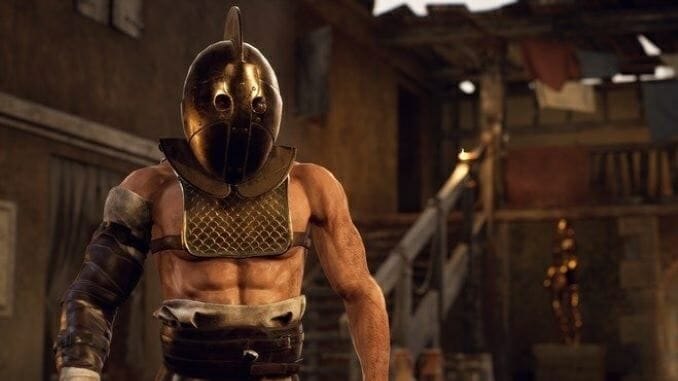The Forgotten City Shows the Value of Public Funding for the Arts

The Forgotten City is a first-person mystery adventure game that began as a Skyrim mod before lead designer Nick Pearce left his job as an attorney to focus on it full time through his company Modern Storyteller, with partial funding by Film Victoria, an Australia-based statutory agency. The game has optional action and platforming elements, but draws from, builds upon, and synthesizes aspects of ancient history, archeology, sociology, philosophy, religion, and mythology for an engaging dialog-based adventure. In creating an engaging videogame with those components, The Forgotten City is a testament to the value of public funding for the arts.
The game’s early going transports the protagonist (a contemporary of the 21st century) to a city of Ancient Rome, tucked into a mountain. The city (a community of just 24 people) is guided by a single rule around which all other laws are centered, “The Golden Rule;” “The many shall suffer for the sins of the one.” From this point, the current Magistrate dictates everyone else’s behavior, such as outlawing weapons or locking away a resident that seems prone to stealing. With the vagueness of the rule and the protagonist’s attempt to escape the city as starting points, the story unfolds through a series of character interactions bringing the player into contact with moral quandaries and philosophical debates. The Forgotten City invites its players to examine their own moral preconceptions in the interest of exploring a world and solving a mystery centered around escaping a time loop—an increasingly frequent gameplay mechanic with the proliferation of roguelikes and roguelites throughout indie gaming, and the mainstream success and critical acclaim of games like Hades and The Outer Wilds.
Along the way, there are optional lessons in ancient history, anthropology, and philosophy. When you ask different people in the town where they’re from, you learn about different aspects of life throughout Rome and its provinces in the time of Nero. Interacting with the culturally diverse citizenry of The Forgotten City allows the player to learn about different aspects of Roman conquest and culture. Asking what they think about the golden rule, players learn of different interpretations of the same core tenants. “Do unto others as you would have them do unto you;” “Do to the doer to make him do;” “Do not do what you would blame others for doing;” and others with different points of emphasis. Players learn that some people believe the rule is a contrivance put together so the magistrate can exercise tyranny, while others think everything will be fine if everyone leads with empathy. Moreover, there’s no dead weight; every character that walks by the player murmuring can be engaged in a conversation through which the plot can be advanced and through which knowledge can be gained.
The Forgotten City is a remarkable game, an artistic triumph that is simple enough in its gameplay and structures, but deceptively complex in its storytelling. The controller inputs are simple and are introduced over the course of the exposition. It isn’t a game with a ton of tools, but it blends linear and branching storytelling to create a variety of options to lead to one of four different endings; the canonical ending is the most difficult to achieve, whereas one of them takes maybe 10 minutes if you make the right choices at the game’s outset, but you might not realize that until you are, like me, eight hours into the game and nearing its finale.
The twists and reveals are the sort of properly executed mysteries that an attentive audience member can guess at—well-constructed set-ups and payoffs rather than surprises coming out of the blue. It directs its storytelling devices toward the end of educating players about how morality and society develop over time. Simultaneously, those lessons are not tedious and the most explicit are also avoidable. Most every conversation provides the opportunity to tell the characters you’re too busy to deal with them.